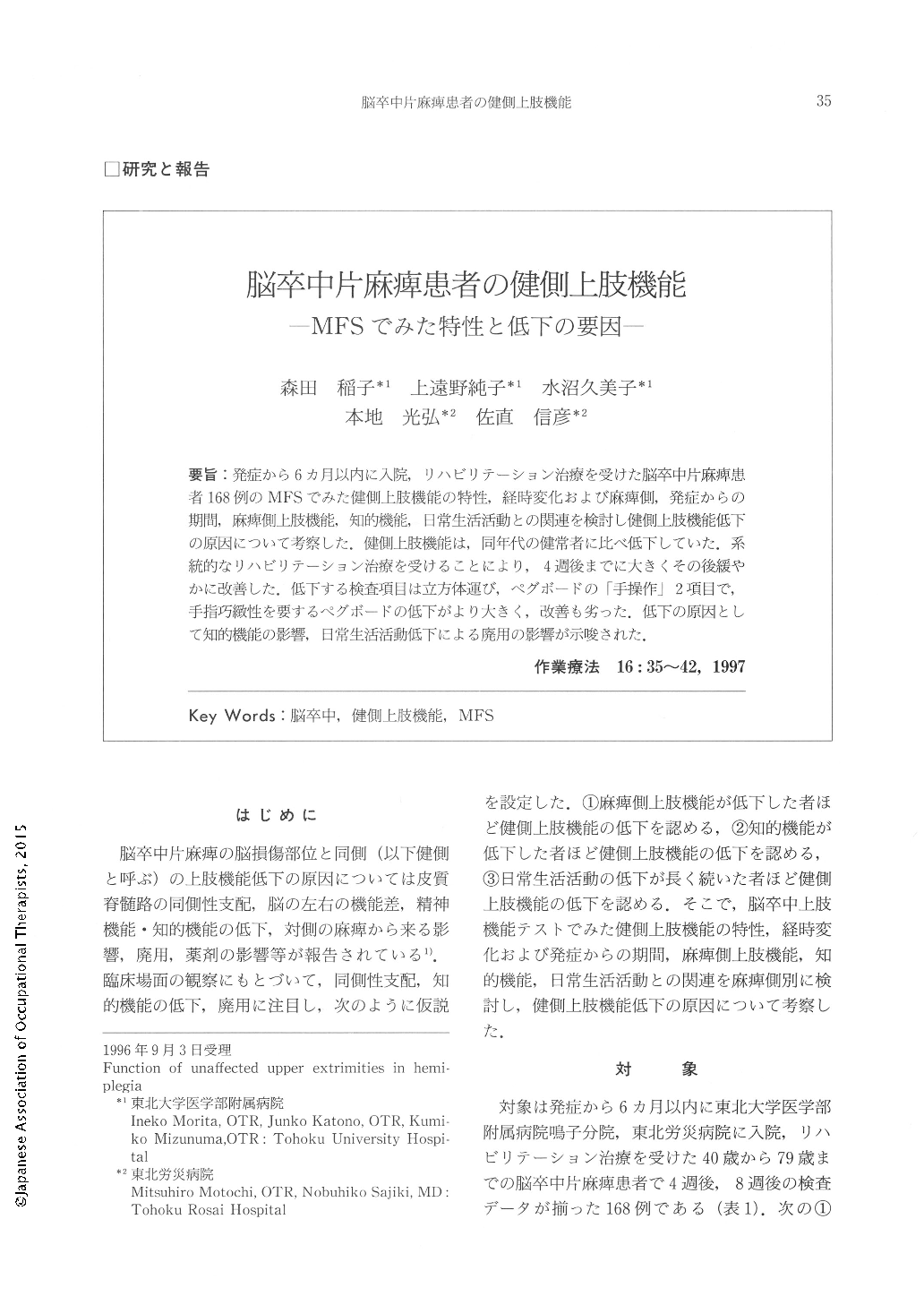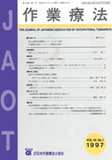Japanese
English
- 販売していません
- Abstract 文献概要
- 1ページ目 Look Inside
- 参考文献 Reference
- サイト内被引用 Cited by
要旨:発症から6カ月以内に入院,リハビリテーション治療を受けた脳卒中片麻痺患者168例のMFSでみた健側上肢機能の特性,経時変化および麻痺側,発症からの期間,麻痺側上肢機能,知的機能,日常生活活動との関連を検討し健側上肢機能低下の原因について考察した.健側上肢機能は,同年代の健常者に比べ低下していた.系統的なリハビリテーション治療を受けることにより,4週後までに大きくその後緩やかに改善した.低下する検査項目は立方体運び,ペグボードの「手操作」2項目で,手指巧緻性を要するペグボードの低下がより大きく,改善も劣った.低下の原因として知的機能の影響,日常生活活動低下による廃用の影響が示唆された.
The function of unaffected upper extremities was studies in 168 stroke patients with hemiplegia. These patients were admitted to hospitals within 6 months after the onset.
The functions of the affected and unaffected upper extremities were measured by the Manual Function Test. We examined the correlations, with regard to function, between the unaffected limb and the affected limb—all the while noting the time since onset, hemiplegic laterality, degrees of recovery, mental and congnitive function, and activities of daily living.
The results revealed that the rate of function of unaffected limbs lowered in comparison with the function of people of the same age with healthy controls, and showed no relation to laterality. The degree of recovery was larger during the 4 weeks of training than in the 4 weeks after the systematic occupational training. The test that proved most difficult for patients with unaffected extremities was the cube and peg manipulation, which required of the upper extremities motions of pinching, moving, pointing and releasing. With regard to finger motion, the peg manipulation proved to be more successful than the cube manipulation, which did'nt improve. These deteriorations were caused, in part, by the routine activities of daily living, and by mental and cognitive dysfunction.

Copyright © 1997, Japanese Association of Occupational Therapists. All rights reserved.


